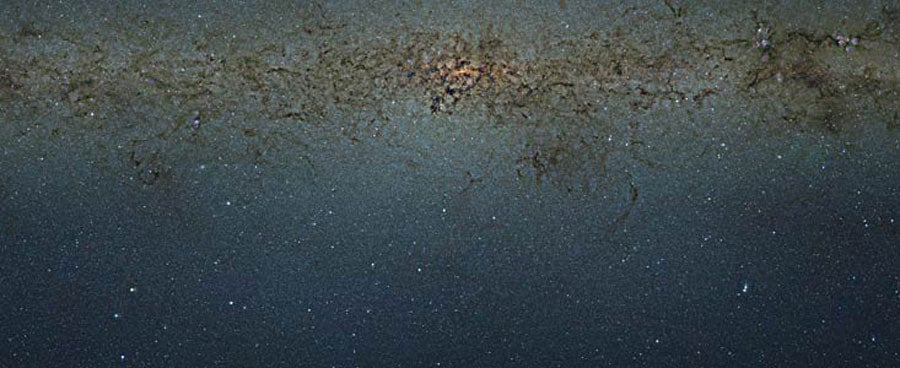“By observing in detail the myriad stars surrounding the center of the Milky Way, we can learn a lot more about the formation and evolution of not only our galaxy, but also spiral galaxies in general,” said Roberto Saito from the Pontifical Catholic University of Chile and the University of Valparaiso.
Most spiral galaxies, including the Milky Way, have a large concentration of ancient stars surrounding the center that astronomers call the bulge. Understanding the formation and evolution of the Milky Way’s bulge is vital for understanding the galaxy as a whole. However, obtaining detailed observations of this region is not an easy task.
“Observations of the bulge of the Milky Way are very hard because it is obscured by dust,” said Dante Minniti, also from the Pontifical Catholic University of Chile. “To peer into the heart of the galaxy, we need to observe in infrared light, which is less affected by the dust.”
The large mirror, wide field of view, and sensitive infrared detectors of ESO’s 4.1-meter Visible and Infrared Survey Telescope for Astronomy (VISTA) make it by far the best tool for this job. The team of astronomers is using data from the VISTA Variables in the Via Lactea program (VVV), one of six public surveys carried out with VISTA. The data have been used to create a monumental 108,200 by 81,500 pixel color image containing nearly 9 billion pixels. This is one of the biggest astronomical images ever produced. The team has now used these data to compile the largest catalog of the central concentration of stars in the Milky Way ever created.
To help analyze this huge catalog, the brightness of each star is plotted against its color for about 84 million stars to create a color-magnitude diagram. This plot contains more than 10 times more stars than any previous study, and it is the first time that this has been done for the entire bulge. Color-magnitude diagrams are valuable tools that are often used by astronomers to study the different physical properties of stars such as their temperatures, masses, and ages.
“Each star occupies a particular spot in this diagram at any moment during its lifetime. Where it falls depends on how bright it is and how hot it is. Since the new data gives us a snapshot of all the stars in one go, we can now make a census of all the stars in this part of the Milky Way,” said Minniti.
The new color-magnitude diagram of the bulge contains a treasure-trove of information about the structure and content of the Milky Way. One interesting result revealed in the new data is the large number of faint red dwarf stars. These are prime candidates around which to search for small exoplanets using the transit method.
“One of the other great things about the VVV survey is that it’s one of ESO’s VISTA public surveys. This means that we’re making all the data publicly available through the ESO data archive, so we expect many other exciting results to come out of this great resource,” said Saito.










